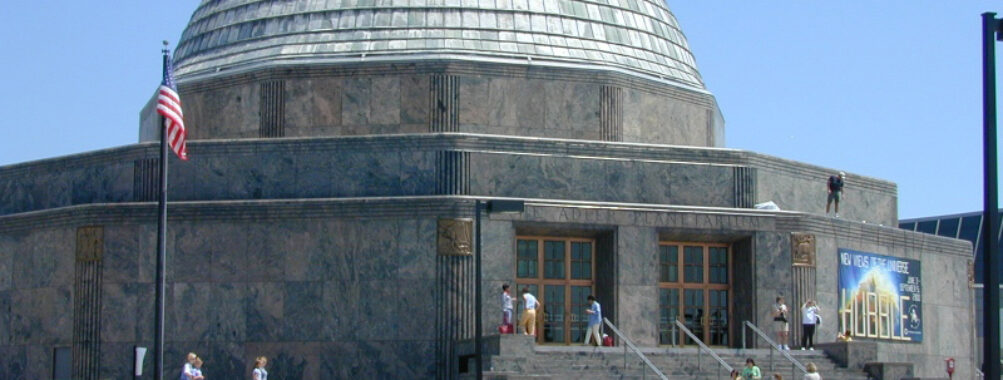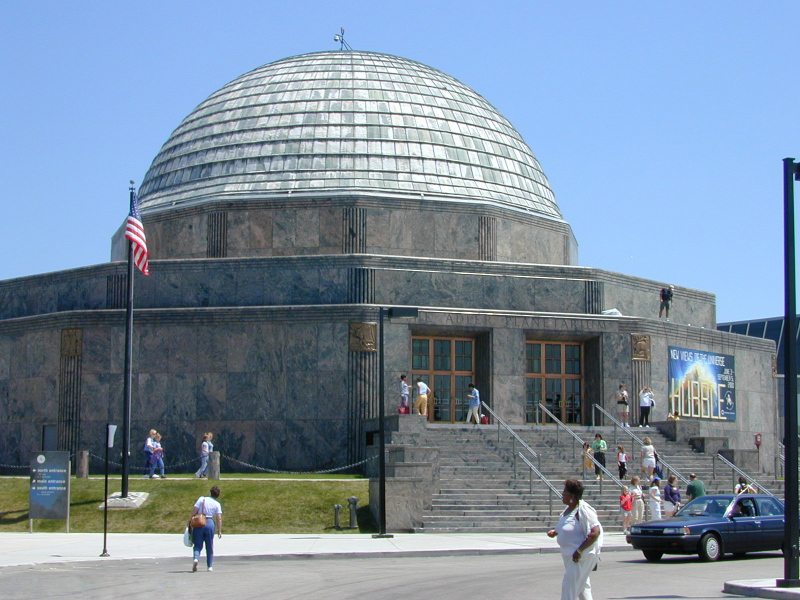
Museum Campus
Table of Contents
History and Significance

You know, every time I wander through the Chicago Museum Campus, I can’t help but feel a profound sense of the city’s ambition and commitment to education. This isn’t just a collection of buildings; it’s a carefully curated landscape dedicated to knowledge, right there on the shores of Lake Michigan. The idea began to coalesce with the vision of Daniel Burnham, though the full integration as a “campus” came much later. It’s truly one of Chicago’s most notable museum districts, connecting three of the city’s leading institutions. And for good reason, it offers an unrivaled concentration of cultural and scientific exploration. My first visit, many moons ago, felt like stepping into a historical continuum, from the ancient to the astronomical. The foresight to cluster these institutions was nothing short of brilliant, creating an easily accessible cultural hub for locals and visitors alike, a testament to Chicago’s dedication to intellectual enrichment.
Main Attractions and Activities
The main attractions on the Museum Campus are, without a doubt, the Field Museum of Natural History, the Shedd Aquarium, and the Adler Planetarium. And honestly, trying to pick a favorite is like trying to pick a favorite child – impossible! The Field Museum, with its vast collection, always leaves me awestruck, whether it’s a new exhibit or an old classic. Then there’s the Shedd Aquarium, a true aquatic wonderland. I remember once, on a particularly hot summer day, escaping into its cool, serene galleries and feeling utterly transported by the marine life. And who could forget the Adler Planetarium, which opened in 1930 as the first planetarium in the Western Hemisphere, offering unparalleled views of the cosmos? Beyond these titans, you also have Soldier Field, home to the Chicago Bears, anchoring the Museum Campus South, and the beautiful Lakefront Trail for a stroll. You can even catch a water taxi for a different perspective of this incredible Chicago landscape from Lake Michigan.
Visitor Experience
Stepping onto the Chicago Museum Campus, I always feel a vibrant hum of activity, a sense of shared discovery that truly elevates the visitor experience. It’s not just about seeing an exhibit; it’s about engaging with it, and these institutions truly excel at that. The Field Museum, for instance, often has interactive displays that bring natural history to life in ways a textbook never could. I recall one particular visit to the Shedd Aquarium where a new aquatic exhibit allowed you to touch certain marine life – a truly unforgettable moment for both me and, as I observed, every child present. And the Adler Planetarium? Their Sky Theater shows are simply breathtaking, transporting you across the cosmos. It’s this commitment to immersive experiences, from the vast collection at the Field Museum to the tranquil galleries of the Shedd, that makes each trip to the museum campus a unique journey of exploration and wonder. And remember, the proximity of these attractions means you can make a day of it, hopping from ancient civilizations to deep-sea creatures and then to the far reaches of space, all within a few steps.
Tips for Visitors
For anyone planning a visit to Chicago’s Museum Campus, and believe me, you absolutely should, I’ve picked up a few insider tips over the years that can make your trip even more enjoyable. Here are some of those tips:
- Consider purchasing a CityPASS or an equivalent multi-attraction pass; it can save you both time and money, allowing you to breeze past ticket lines and dive straight into the wonders of the Field Museum, Shedd Aquarium, and Adler Planetarium.
- Arrive early, especially if you’re visiting during peak tourist season. The mornings tend to be less crowded, giving you more space to wander through the vast collection or truly absorb the tranquility of the aquatic exhibits.
- Parking can be a bit of a challenge, but there are garages nearby, and the campus is well-served by public transportation – a much more sensible option, in my opinion, than navigating Lake Shore Drive traffic.
- Don’t forget comfortable shoes; you’ll be doing a fair bit of walking between these magnificent institutions, and possibly even along the beautiful Lakefront Trail.
Accessibility and Facilities
One of the things I truly appreciate about the Chicago Museum Campus is its thoughtful approach to accessibility and visitor facilities, ensuring that everyone can enjoy the incredible offerings. All three main institutions – the Field Museum of Natural History, the Shedd Aquarium, and the Adler Planetarium – are fully accessible, with ramps, elevators, and accessible restrooms. I’ve seen firsthand how their commitment makes a difference, allowing families with strollers, individuals using wheelchairs, and those with other mobility needs to navigate the vast collection and stunning aquatic exhibits with ease. Beyond accessibility, you’ll find a range of amenities to enhance your visit, including:
- Cafes and gift shops in each museum
- Convenient family restrooms and dedicated spaces for nursing mothers
And with the campus’s prime location, bordered by Lake Michigan and close to Soldier Field and McCormick Place, you’re never far from other city conveniences. There are even water taxi services from the campus, offering a unique perspective of the city from the water, truly rounding out the experience. It’s all part of the well-designed landscape that is Chicago’s Museum Campus.
Unique Features
What truly sets the Chicago Museum Campus apart, in my humble estimation, isn’t just the caliber of its institutions, but the synergy they create. It’s a remarkable cultural ecosystem, nestled right there on the shores of Lake Michigan. You see, it’s not just a collection of buildings; it’s a meticulously planned urban landscape. The architectural styles, for one, are fascinating – from the classical grandeur of the Field Museum of Natural History to the more modern, striking lines of the Shedd Aquarium. And then there’s the Adler Planetarium, perched out on Northerly Island like a cosmic observatory, offering incredible views of the city skyline alongside its celestial wonders. This proximity allows for a unique flow of experience; you can walk from ancient history at the Field Museum to deep-sea exploration at the Shedd, and then journey into the stars at the Adler, all within a stroll. It’s a testament to Chicago’s vision for accessible education and cultural enrichment, a truly unique arrangement that few other cities can boast. Plus, the fact that you have the Lakefront Trail right there for a pleasant walk or bike ride, and even Soldier Field nearby, just adds another layer to this already impressive attraction.
Overall Impressions
My overall impression of the Chicago Museum Campus, after countless visits spanning many years, remains one of profound admiration and pure delight. It’s a place that effortlessly blends education with entertainment, a true jewel in the crown of the City of Chicago. The sheer breadth and depth of knowledge housed within the Field Museum’s vast collection, the captivating aquatic displays at the Shedd Aquarium, and the awe-inspiring shows at the Adler Planetarium’s Sky Theater are simply unparalleled. But beyond the individual attractions, it’s the cohesive feel of the campus itself that truly resonates. The sweeping views of Lake Michigan, the fresh air, and the palpable sense of discovery that permeates the entire landscape create an atmosphere unlike anywhere else. It’s a place where you can easily spend an entire day, or even several days, and still feel like you’ve only scratched the surface of what’s on offer. And as someone who appreciates a good stroll, the connection to Grant Park and the Lakefront Trail just makes the entire experience so much more enjoyable. It’s more than just a destination; it’s an experience that genuinely enriches the soul.
Pros and Cons
The Chicago Museum Campus offers an unparalleled concentration of world-class institutions, including the Field Museum, Shedd Aquarium, and Adler Planetarium, all within proximity. This allows for efficient and diverse exploration, moving seamlessly between natural history, aquatic wonders, and cosmic displays. The breathtaking setting on Lake Michigan provides stunning views and a refreshing breeze, especially appealing during warmer months. The quality of exhibits at each museum is consistently top-tier, with the Field Museum’s vast collection alone capable of captivating visitors for days.
| Category | Details |
|---|---|
| Cons | Parking can be a nightmare and expensive, especially on busy weekends or during Soldier Field events. The cost of admission to all three main attractions can add up, particularly for families, even with a CityPASS. Peak times can also lead to overcrowding, potentially detracting from the immersive experience. |
| Overall Assessment | Despite its drawbacks, the pros far outweigh the cons, making it one of Chicago’s leading institutions and a must-visit. |
Location
Places to Stay Near Museum Campus
Find and Book a Tour
Explore More Travel Guides
No reviews found! Be the first to review!